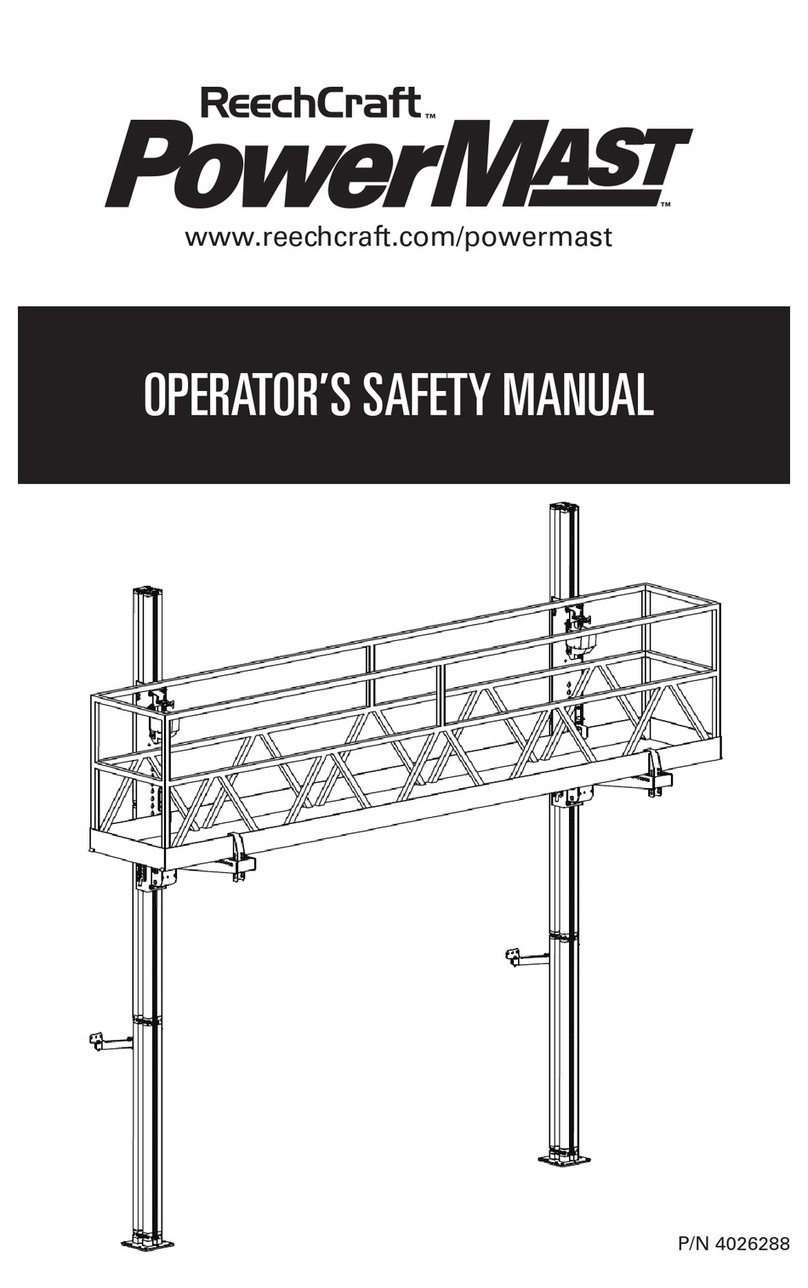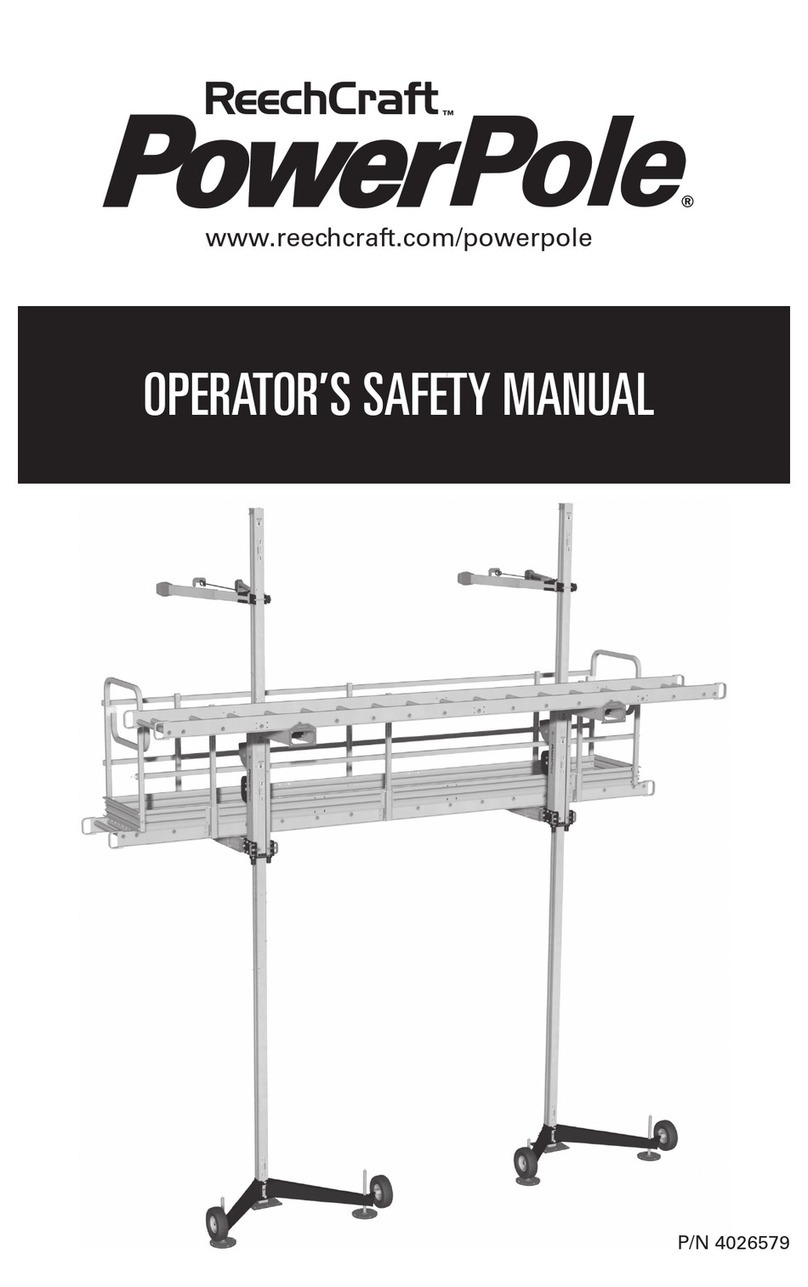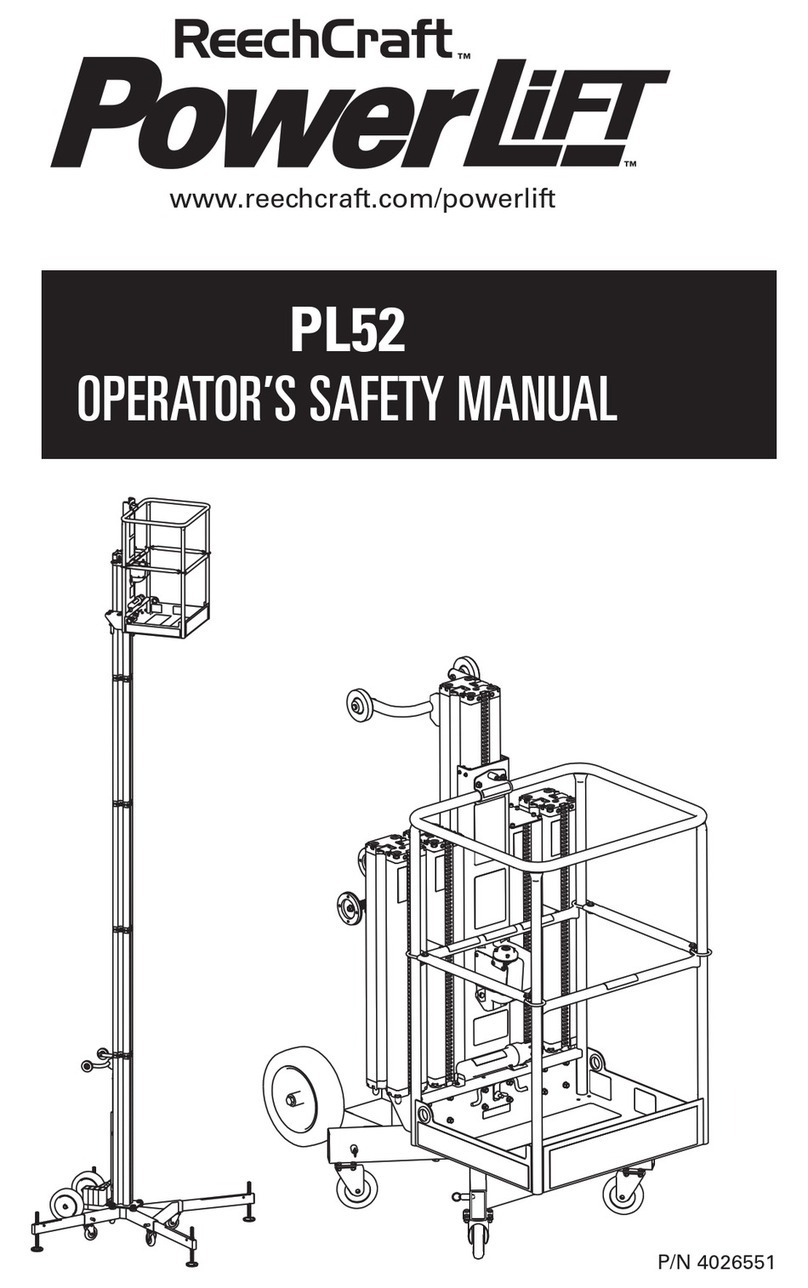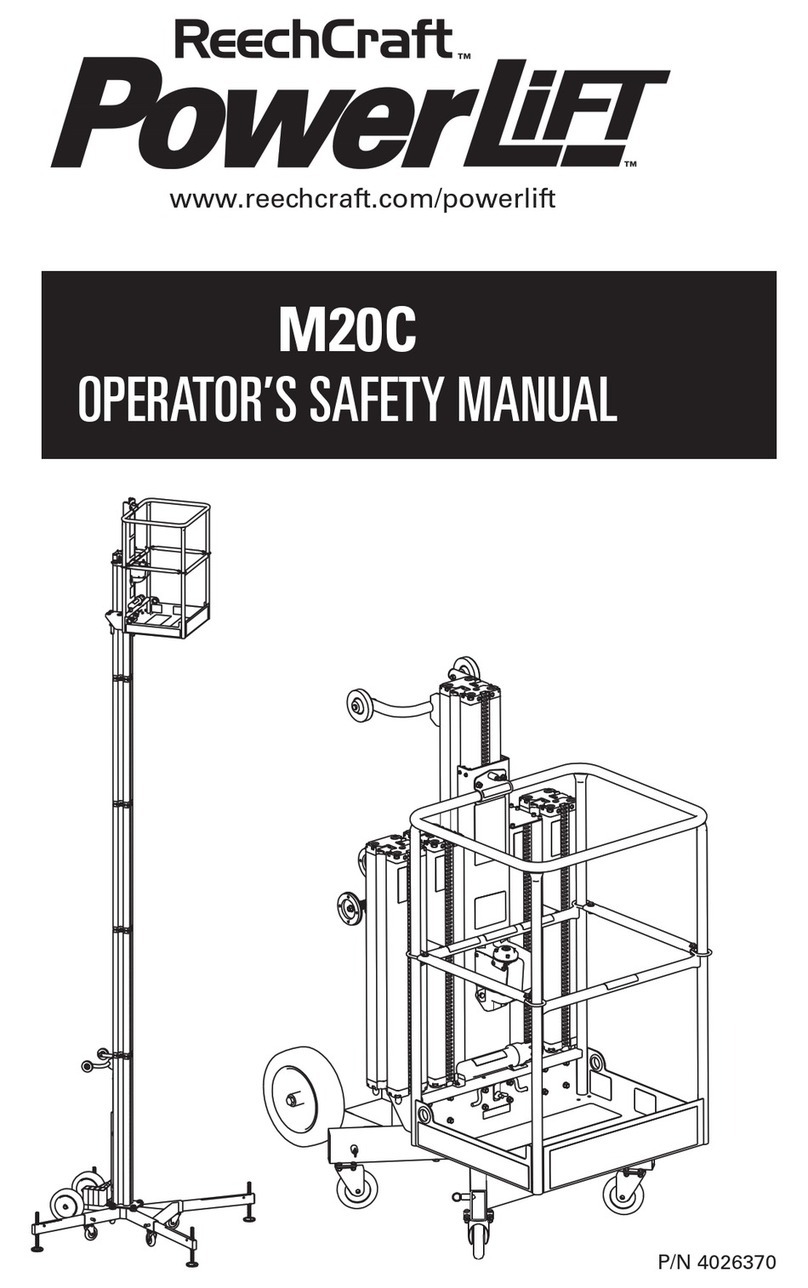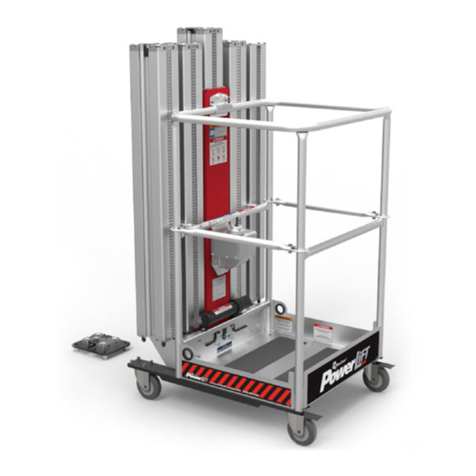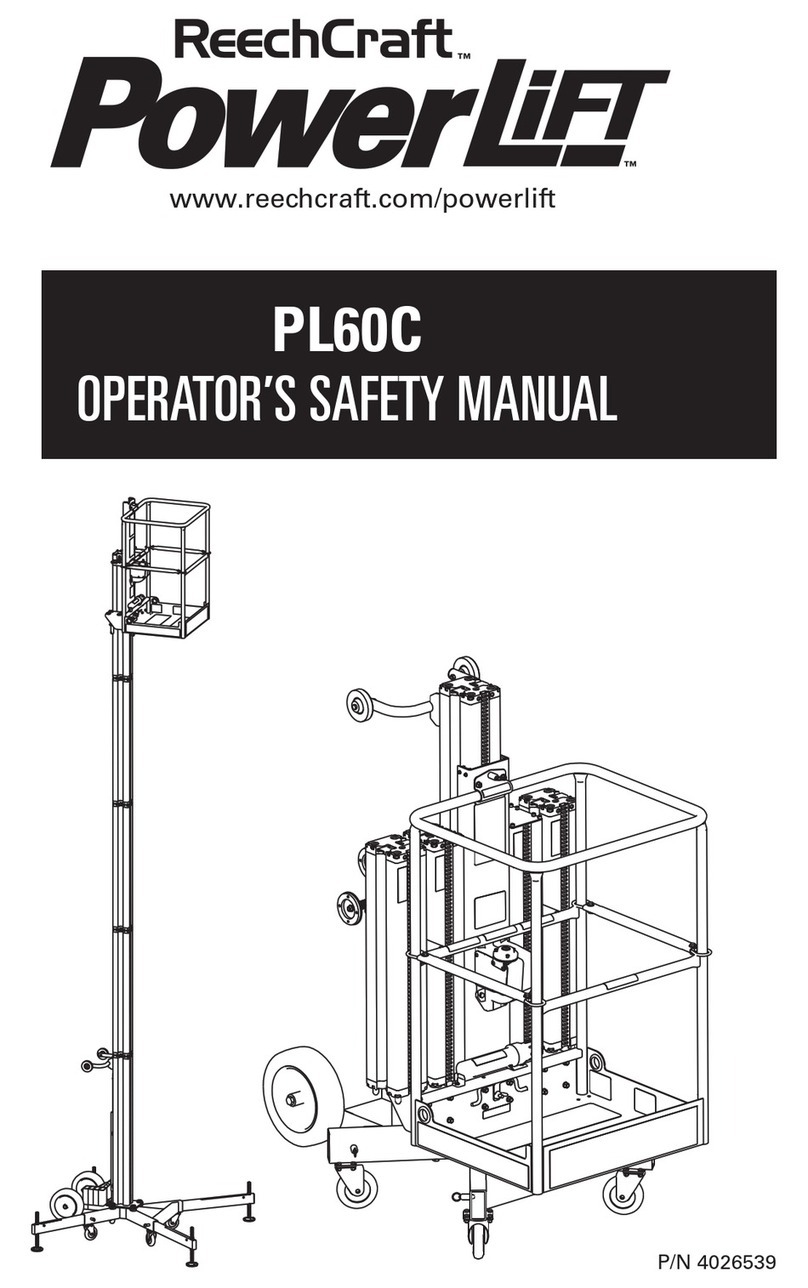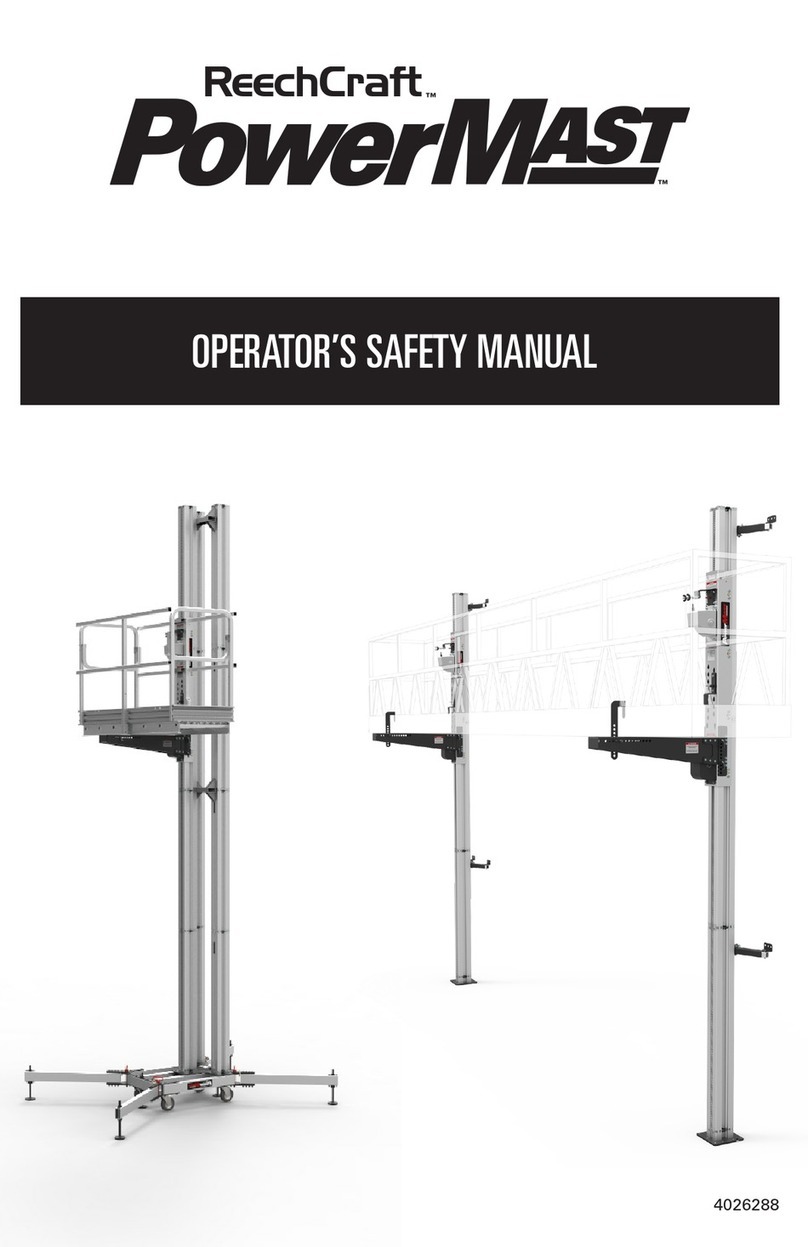
reechcraft.com/powerlift 888-600-6160 5
3.4 Machine
Setup
......................................................................................................... 29
Stabilizing the
Base
................................................................................................. 29
Elevating................................................................................................................... 31
Joining Mast Sections............................................................................................. 32
Separating Mast Sections....................................................................................... 33
Unpowered Descent................................................................................................ 33
3.5 Maneuvering +
Transport
....................................................................................... 34
Upright Maneuvering.............................................................................................. 34
Tilted-back Maneuvering........................................................................................ 34
Parking and Storage................................................................................................ 36
VehicleTransport...................................................................................................... 36
SECTION 4 - EMERGENCY PROCEDURES
4.0 Introduction.............................................................................................................. 37
Manual Descent
Crank
............................................................................................ 37
Discharged Battery or Loss of Power..................................................................... 38
Operator Unable to Control the
Machine
.............................................................. 39
Platform Caught
Overhead
..................................................................................... 40
4.1 Incident
Notification
................................................................................................ 40
SECTION 5 - GENERAL SPECIFICATIONS
5.0 Introduction.............................................................................................................. 41
5.1 Decal Contents + Locations..................................................................................... 41
5.2 Specifications........................................................................................................... 43
Machine
Specifications
........................................................................................... 43
SECTION 6 - SERVICE +MAINTENANCE
6.0 Introduction.............................................................................................................. 46
Maintenance
Safety
................................................................................................. 47
6.1 Machine Preparation, Inspection, + Maintenance............................................... 4
7
Preparation, Inspection, and Maintenance............................................................
4
7
Pre-start Inspection................................................................................................. 48
Frequent and Pre-delivery
Inspection
....................................................................
48
Annual Machine
Inspection
.................................................................................... 48
5-year Machine Inspection and Track Replacement.............................................. 48
6.2 Preventive Maintenance + Inspection
Schedule
................................................... 49
Inspection and Maintenace
Codes
......................................................................... 49
6.3 Servicing + Maintenance Guidelines..................................................................... 5
1
Safety and Workmanship........................................................................................ 51
Cleanliness
............................................................................................................... 51
Component Disassembly and Reassembly........................................................... 51

